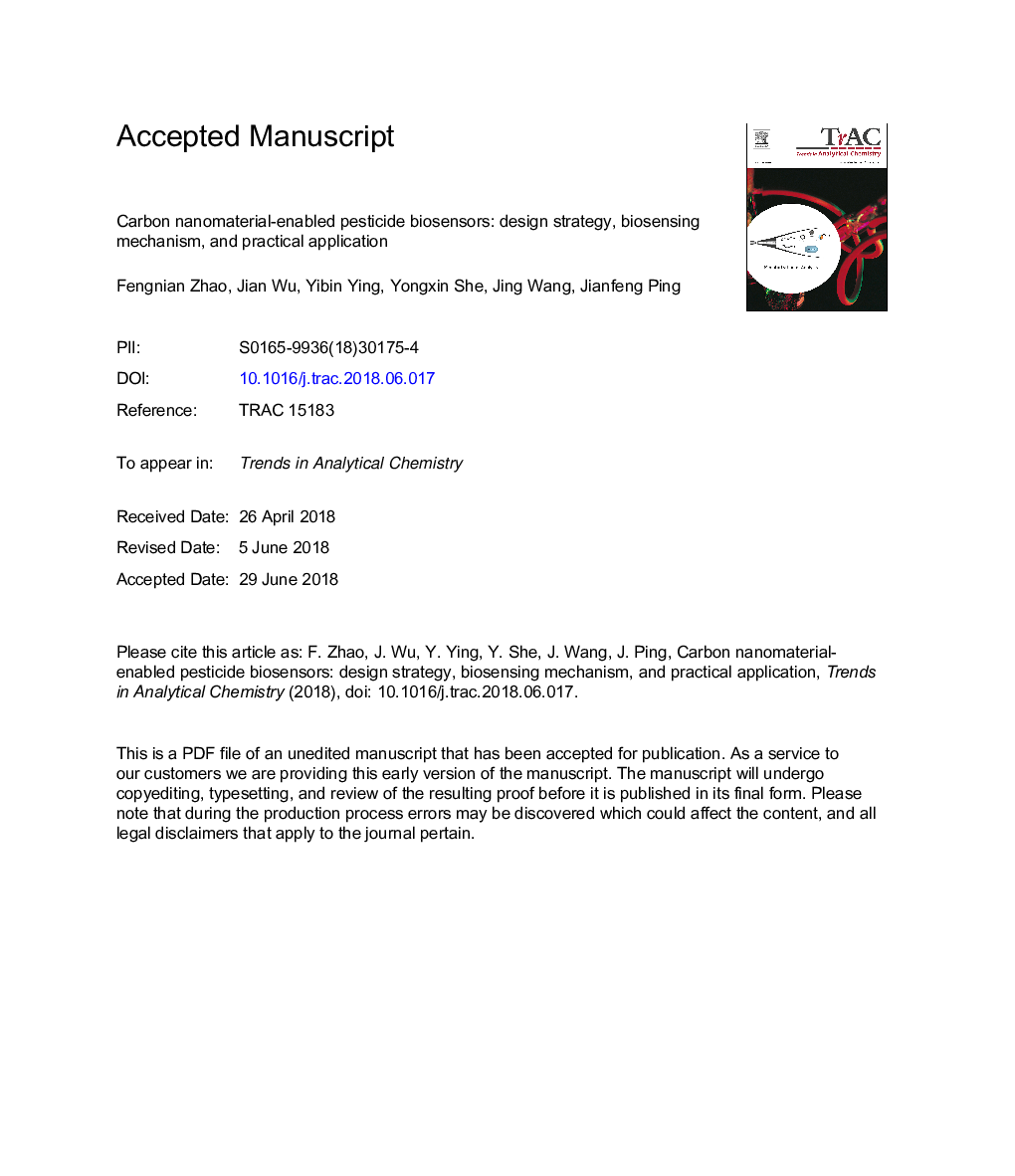| Article ID | Journal | Published Year | Pages | File Type |
|---|---|---|---|---|
| 7687360 | TrAC Trends in Analytical Chemistry | 2018 | 58 Pages |
Abstract
Due to overuse or abuse, pesticides can bring about severe residue problems, which will lead to potential toxicity for environment and human health. Consequently, it is of great importance to establish simple, rapid, robust, and reliable methods for monitoring pesticides. With outstanding properties like high electrical conductivity, catalytic activity, optical property, and favorable biocompatibility, carbon nanomaterials have been regarded as a promising candidate for the development of high-performance biosensors since they appeared. This review highlights the recent advances and new trends in carbon nanomaterial-enabled biosensors for the detection of pesticides, including the application of graphene, carbon nanotubes, carbon dots, and other carbon nanomaterials with two main biosensing ways, i.e. enzyme and enzyme-free biosensors. In addition, we briefly discuss the current challenges and future prospects for the development and application of carbon nanomaterial-enabled biosensors for pesticides analysis.
Related Topics
Physical Sciences and Engineering
Chemistry
Analytical Chemistry
Authors
Fengnian Zhao, Jian Wu, Yibin Ying, Yongxin She, Jing Wang, Jianfeng Ping,
